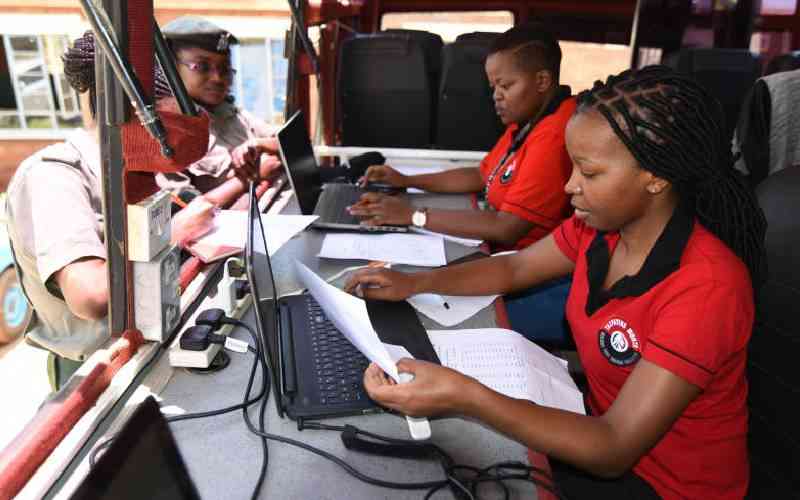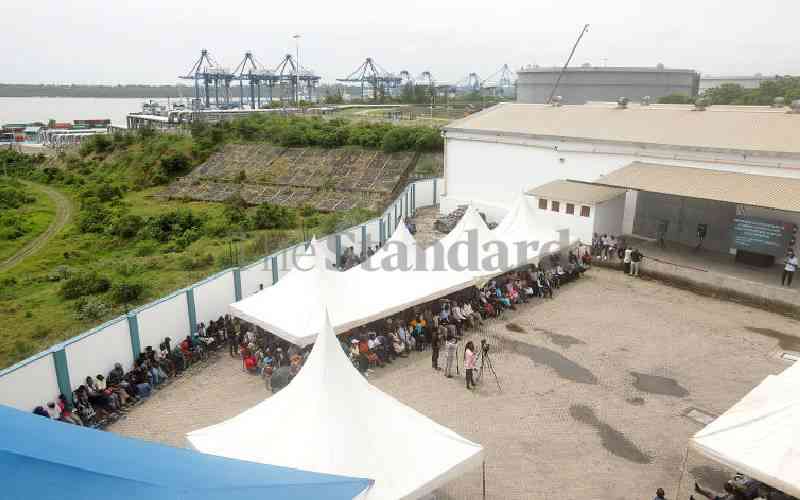
International firms are jostling to take over the Jomo Kenyatta International Airport as the government opens up local aviation infrastructure to the private sector to fill a Sh260 billion financing gap.
The government recently disclosed that State-owned airports across the country face a Sh260 billion (Sh2 billion) financing hole to bring their operations up to date.
Half of the amount ($1 billion; Sh130 billion) is projected to be what the country’s main airport, Jomo Kenyatta International Airport (JKIA) requires to become a competitive hub in the region.
This is money that the government is unlikely to raise and will be relying on Public Private Partnerships (PPPs) to bridge the gap.
Local airports, especially the major ports including JKIA and Wilson have been earmarked for upgrades for years but little has moved.
The airports continue using facilities that have been in place for decades despite growth in passenger numbers and aircraft having outstripped their capacity.
For instance, JKIA’s capacity is 7.5 million passengers annually, but it currently handles about 10 million passengers.
Plans to build the 20 million passenger-per-year Greenfield terminal were abandoned after it emerged that the government could not afford to fund the Sh56 billion project.
- Key health projects at risk as Treasury cuts budget
Keep Reading
Already, there is a storm surrounding a firm that has reportedly been eyeing to take over JKIA to undertake upgrades and operate the airport through a Build Operate and Transfer (BOT) arrangement for 30 years.
India’s Adani Airport Holdings has allegedly entered into a deal with the Kenya Airports Authority (KAA) to lease JKIA, but the Senate has queried whether the proposal followed due process.
In the Aviation Policy for Kenya, a document that has recently received approval from the Cabinet, the government said it would explore different financing and funding options to accelerate airport expansion.
“It is considered that current infrastructure is not adequate to handle passenger and cargo operations at most airports. In this manner, it is estimated that KAA’s aerodrome network requires an investment of approximately $2 (Sh256 billion) for the mentioned period, including both expansion/compliance as well as major maintenance and replacement investments,” says the aviation policy.
“Jomo Kenyatta International Airport is the main driver of the mentioned investment plan, accounting for approximately $1 billion (Sh128 billion) to increase its current capacity and be able to accommodate the forecasted demand.”
It noted that traffic in JKIA had reached 8.3 million passengers, against its capacity to handle 7.5 million passengers.
“Thus, some terminal processing facilities already showed congestion issues,” said the policy.
KAA has been expanding Terminals 1B and 1C to increase capacity to eight million passengers annually. This is, however, not adequate for the growing passenger numbers.
The airport also uses temporary facilities and one of them – Terminal 2 – is also nearing the end of its life. It had been set up as an emergency measure following a fire in 2023. It was supposed to serve for 10 years while the government constructed a permanent facility.
“The terminal opened in 2015 and is thus close to the end of its life cycle (approximately 2025).
Terminal 1E is also a temporary facility for international arrivals. Overall, both terminal buildings show fair maintenance conditions, with some key issues identified mainly of operational nature.
Specifically, the existing terminal architecture hinders a smooth passenger journey, increasing connecting times and thus not allowing to unleash JKIA’s potential as a hub,” said the Cabinet-sanctioned policy.
The government shall explore different funding and financing options to accelerate airport expansions.
If further said the government is exploring different funding and financing options to accelerate airport expansions. It added that county governments should chip in the construction of new aviation infrastructure while existing airports should pursue strategies that make them financially viable.
“The government will ensure that major airports in general and JKIA, in particular, will be expanded to facilitate forecasted traffic growth,” said the policy.
“The private sector is encouraged to construct and or operate new and/or existing airports or aerodromes on BOT or PPP frameworks Capacity enhancement will be focused on increasing the level of service at airports, especially at JKIA, to help the airport become the most relevant airport in the region, the gateway in and to East Africa Existing and also new airports to be constructed, should as far as possible be developed and operated on the basis of financial sustainability and viability.”
KAA reported a revenue of Sh17 billion in the year to June 2023, with JKIA contributing to the bulk of revenues, making it a prime target for investors looking to get into the local aviation industry.
But even before the process of bringing on board private players into public-owned airports and other infrastructure has been set in motion, Kisii Senator Richard Onyonka claims that JKIA has been leased to the Indian firm Adan Airport Holdings.
The Senator said under the deal, the company would operate the airport for 30 years while charging users levies and paying a concession fee to KAA.
“In the statement, the committee should provide the contract details of the project, citing the ownership of the Adani Commercial company, processes undertaken to identify and final award of the lease.”
It would undertake an upgrade of some infrastructure under the BOT model that would then be handed over to KAA on the expiry of the concession.
Adani operates eight airports in India. While this could give the credentials in its pitch to run and operate JKIA, it has been criticised for increasing user fees after taking over, resulting in higher ticket prices.
The larger Adani Group has also courted controversy elsewhere and was in March this year being investigated by the US government as to whether the firm or people linked to it were involved in paying officials in India for favourable treatment on an energy project, according to a Bloomberg report.
National carrier Kenya Airways (KQ) has in the past proposed the takeover of JKIA. The airline had in 2019 made a privately initiated investment proposal (PIIP) to run JKIA.
KQ had proposed the formation of an aviation holding company that would own the carrier, the airport and a few other critical aviation sector firms.
This, it noted, would mirror the case in other jurisdictions including Ethiopia, Qatar and the United Arab Emirates, where the carriers and the main airports are run by holding companies, a model that has propelled both airlines and the hubs to global success.
This was, however, fought on several fronts, including by KAA and Members of Parliament.
Other than JKIA, the government also hopes to extend PPPs to other airports. These include Wilson Airport, which is one of the busiest airports in the region but has been collapsing under the weight of its success.
The airport serves as a hub for many carriers operating light aircraft and undertaking diverse operations from tourism and small cargo freighters to local and regional destinations as well as humanitarian organisations.
“Other relevant airports such as Wilson Airport and Kisumu Airport are also expected to require significant investments in the short-term to increase their current capacity. In particular, Wilson Airport is foreseen to require major development works in order to accommodate the forecasted air traffic demand,” reads the policy.
Wilson has over time experienced several mishaps that have been due to a mix of challenges, including years of underinvestment and insensitive land use in the area, leaving it an island amid numerous real estate developments, some of them high-rise and the legality of others questionable.
While Wilson Airport is nearly rivalling JKIA in terms of the number of aircraft that land and take off at the facility, its area is a fraction of JKIA.
It is far busier than most of the other airports that have received billions more in investments and attention from civil aviation authorities but lie idle, only receiving a handful of flights every day. A 2020 KCAA report noted that the developments in its surrounding areas are a threat and might hamper attempts to further improve the airport and maximise its potential.
KCAA noted that “land encroachment at Wilson Airport is a safety hazard, high buildings in the vicinity of the airport which is also used for training students.”
“Aerodromes are occasionally ignored during land use planning and control (Wilson Airport is one such case),” said a recent KCAA report evaluating the status of the aviation industry.
The report evaluates the civil aviation industry and its growth projections as well as needs over the next decade.
 The Standard Group Plc is a multi-media organization with investments in media platforms spanning newspaper print
operations, television, radio broadcasting, digital and online services. The Standard Group is recognized as a
leading multi-media house in Kenya with a key influence in matters of national and international interest.
The Standard Group Plc is a multi-media organization with investments in media platforms spanning newspaper print
operations, television, radio broadcasting, digital and online services. The Standard Group is recognized as a
leading multi-media house in Kenya with a key influence in matters of national and international interest.











